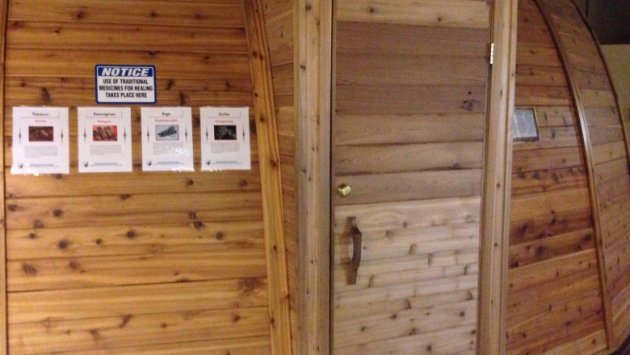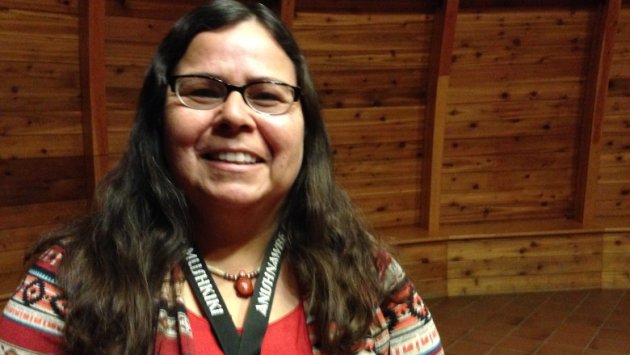 CBC – 9 hours ago
CBC – 9 hours ago
CBC - Cancer cured by 'medicine man', First Nations man says
An Anishnawbe man from northwestern Ontario says traditional healing practices "got rid" of his leukemia, and he's concerned recent controversy over the treatment of two First Nations girls in southern Ontario will rob others of a cure.
On Nov. 14, an Ontario judge dismissed an application from McMaster Children's Hospital in Hamilton that would have forced chemotherapy on an 11-year-old First Nations girl. Earlier this year there were concerns that children's aid would intervene in the case of another First Nations girl after her family withdrew her from chemotherapy.
"People who [were] trying to take the child away, they're just close minded about the possibilities of traditional healing," said Daryl Archie. "I'm alive and well and a good example that it does work."
'All those needles'
The 47-year-old from Big Grassy River First Nation, was diagnosed with leukemia when he was a 19-year-old and sent to Winnipeg for chemotherapy. He said doctors gave him a 50/50 chance of survival.
"Some of those medical treatments they do are pretty painful. They stick a big needle into your hip bone for marrow with no pain killers at all," Archie said, recalling that the chemotherapy drugs made him feel "antsy and anxious."
"Eventually I got tired of the drugs and all those needles."
After about 6 months of unsuccessful treatments Archie left Winnipeg. "I guess I felt like I'd just go home and, I don't know," he said, his voice trailing off. He was close to death. "I wondered why is this happening to me?"
 Archie went to Roseau River First Nation in Manitoba and took part in traditional Anishnawbe ceremonies.
Archie went to Roseau River First Nation in Manitoba and took part in traditional Anishnawbe ceremonies.
Sweat lodge and shaking tent
But then Archie's sister found "a traditional healer, a medicine man, who I could go see who would help me," he said.
He travelled to Roseau River First Nation in Manitoba and took part in traditional Anishnawbe ceremonies like the sweat lodge and shaking tent and was introduced to a healer named Eddie Two-Teeth from Montana. Two-Teeth conducted more ceremonies and Archie travelled with him to the United States.
"He gave me some medicine, it was a small tree and he told me to wrap it in a circle (it was about six to eight inches across) and to boil that and drink the water from there and to drink it for 30 days," Archie said.
The healer told him to keep a positive attitude and when the 30 days were up to go to a doctor for a blood test.
"So I did and my doctor, after the test came back, he told me my blood was just as good as his," Archie said. "So that told me I was rid of the leukemia."
'With the help of the Creator'
Archie said he has remained healthy in the decades since he was cured. He's not sure why the traditional ways worked for him when chemotherapy failed, but believes it's related to prayer.
"With traditional medicine, it's with the help of the Creator and with western medicine it's all just all chemicals and drugs that they put into your body," he said. "With the ceremonies, the Creator is right there. They don't even talk about that in the hospital."
The families of both of the First Nations girls choose to remove them from chemotherapy. They have sought alternative treatment at a clinic in Florida that they say is in line with traditional indigenous medicine. Questions have been raised about the clinic and the qualifications of the man who is treating them.
 Teresa Trudeau is the traditional healing coordinator at Anishnawbe Mushkiki in Thunder Bay.
Teresa Trudeau is the traditional healing coordinator at Anishnawbe Mushkiki in Thunder Bay.
'Credibility comes from the community'
Archie isn't familiar with the details of the girls' treatment, but he said he felt confident about Eddie Two-Teeth's skills as a healer "from talking to the people in Roseau River and what they've seen and people that had gotten healed already from this medicine man," he said. "That kind of reinforced my belief in him."
Teresa Trudeau said that's the way verification of healers generally works. Trudeau is the traditional healing coordinator at Anishnawbe Mushkiki in Thunder Bay, one of several Native Health Access Centres across Ontario that provide both western medicine and First Nations healing.
"Credibility comes from the community when it comes to traditional health care," Trudeau said. "That's how someone becomes recognized. The references are very important."
Traditional and western medicine can work together
Trudeau said the most common misconception she encounters is that patients must choose between seeing a doctor or seeing a healer.
"It's not an either/or, you can work hand in hand with traditional and western medicine, in fact it's necessary," she said, adding that healers often rely on diagnostics such as blood tests or x-rays to better treat their patients.
Trudeau said there are some standard plant-based medicines that are used by healers to treat a variety of ailments, but "medicine people" will also use ceremony to receive a vision of a particular medicine to use for an individual seeking their help.
"A ceremony to seek that medicine is necessary," she said. "With spiritual guidance, through prayer, the traditional healer will see that medicine visually, it will come to them, the particular medicine that individual will need. It's not to say that one medicine will work for everybody."
True "medicine people" are rare, Trudeau said, perhaps one or two per province in Canada. But she adds traditional healing is accessible to everyone.
"We are healers within all of us. That's what our healers do. They show us how to heal ourselves on our own. That's part of empowerment, is teaching people how to do that," she said.
"It's not the healer who heals us. You heal yourself."
No comments:
Post a Comment